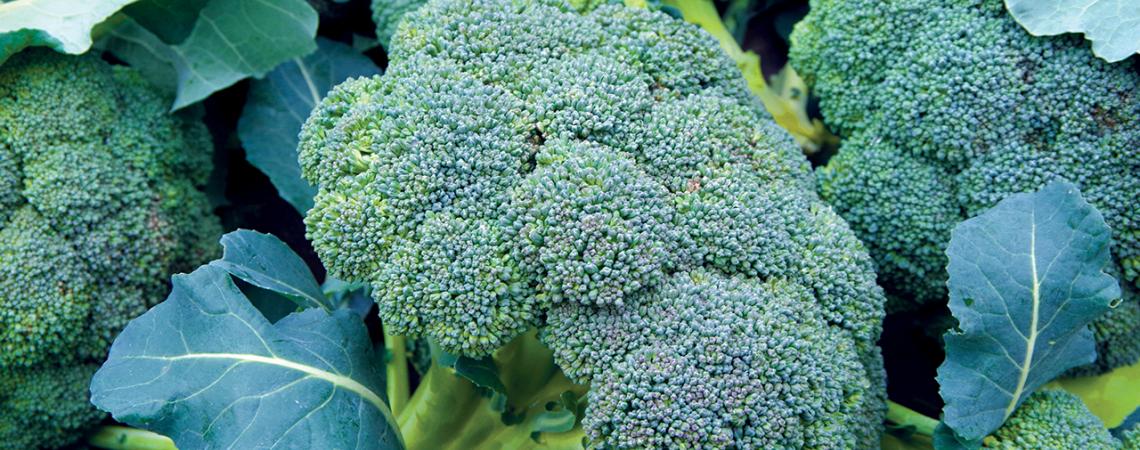Broccoli is one of the easiest of veggies to grow, but it takes a bit of finesse to finish with a cut that’s head and shoulders above the rest.
Many of us gardeners have our vegetable favorites, but truth be told, I’m a bit biased when it comes to broccoli. Not only do its flowers attract beneficial insects, but its culinary versatility and ease of growing make this cool-season favorite one of the most desirable vegetables to grow in the kitchen garden. When grown in the cool weather of spring or fall, the result is a sweeter-tasting head with gourmet flavor. Growing broccoli with sweet, tender, tasty heads is all about getting plants off to a good start, keeping them content, and heeding the signs.
The need for speed — One of the best-kept secrets to growing a prime head of broccoli is to grow it fast. Any setbacks that slow down the plant’s growth will result in inferior-tasting heads. Transplants are key for early-spring plantings. Set out four- to six-week-old hardened-off starts in the ground about four weeks before your last spring frost (young seedlings can withstand a light frost, but be sure to cover them if a heavy frost is expected). For fall-harvested crops, seeds sown directly into the ground in July to early August may produce more vigorous plants.
Another way to speed things along is with the right amount of sun, soil, and water. Choose a sunny location with at least five hours of daily sun. Moist but well-draining soil rich in organic matter is best, with a soil pH between 6.0 and 6.8 and soil temperatures between 55 and 75 degrees. Deep, consistent moisture is key — lack of adequate moisture can result in premature, poor-quality heads. Mulch helps to maintain soil moisture, moderate soil temperatures, and keep roots cool.
Happy plants make for tasty heads — Broccoli is a moderately heavy feeder, so keep plants well-fed by digging in a 2- to 4-inch layer of compost or a thin layer of rotted manure before planting. Work in about a half shovelful of either aged manure or compost or mix in 1/4 cup (per plant) of complete, nitrogen-rich organic fertilizer.
If your soil fertility needs a boost, you may also need to side-dress plants with additional compost, rotted manure, or other nitrogen-rich fertilizer, such as fish meal. Start with a light side dressing when the central head is about an inch across. More may be needed once the central main head has been cut.
Heed the harvest signs — All your efforts to grow broccoli with great taste will be in vain if you miss the signs on when to harvest the head. For best flavor, harvest when the unopened flower buds are just starting to swell, but before they begin to yellow. Wait too long and the stalks will become tough, with stronger-tasting heads.
Harvest heads in the cool of the morning before the heat sets in the plant. Cut the central stalk at a 45-degree angle, about 5 to 8 inches below the head. Doing so will encourage side-shoot production and increase plant yield. Harvesting these side shoots regularly will encourage continued production.
Kris Wetherbee is a master gardener from Oregon.









